How Does A Refrigerator Work? What You Need to Know!
-
Greg Iacono
- Last updated:
It was in 1834 that the first working refrigerator was made. In 1913, fridges began appearing in American homes, forever changing how we live, cook and eat. It can be argued that refrigerators altered the course of human history, but few people understand how they work. If that’s you, and you’re keen on discovering all the secrets of refrigeration and how your fridge keeps your food cold and fresh, read on.
How Does It Work?
In basic terms, a refrigerator separates hot air from cold air by absorbing the hot air inside your fridge and venting it away so that only the cold air remains. However, to truly know how your fridge works, you must look at the refrigeration cycle, which separates the cold and hot air.
Your fridge does this using several different parts, including the compressor, condenser, evaporator, capillary tube, and thermostat. It also uses a cooling agent that is constantly changing from a liquid to a gas when your fridge is running. This is a process called evaporation. The refrigerant is the most important of all the components as it absorbs heat, leaving cool air behind to keep your food cold. The best way to explain the process is by showing the various steps in the refrigeration cycle.
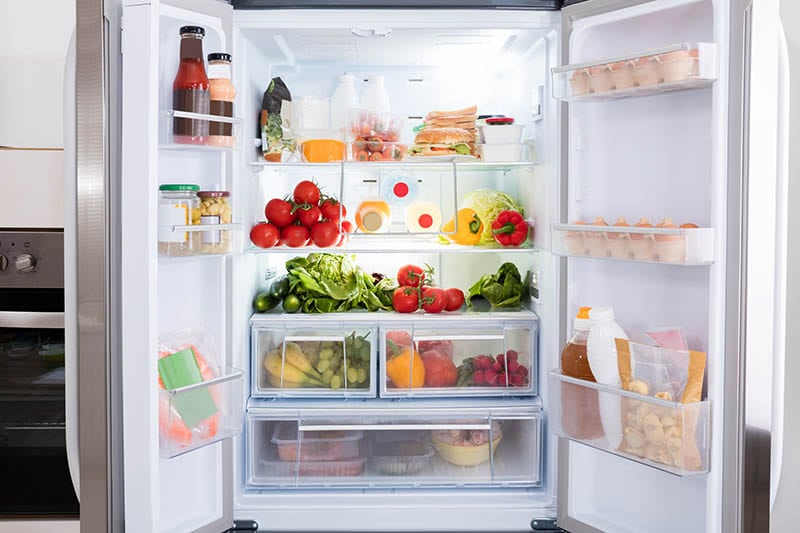
Step 1
The refrigerant is compressed (aka constricted) by the compressor, which makes it hotter and turns it into a gas.
Step 2
The condensed and heated refrigerant gas is forced through the condenser coils. There it exchanges heat with the air in your home. The warmed air is then let out via an exhaust vent.
Step 3
As the hot refrigerant mixes with the colder air, it turns back into a liquid.
Step 4
Now in its liquid form, the refrigerant enters the evaporator coils inside your fridge. There, warm air is absorbed, cooling your fridge by removing the heat.
Step 5
The refrigerant, having absorbed the heat inside your fridge, evaporates and turns back into a gas, which then flows back to the compressor again to start the process over.
A refrigerator is a closed and sealed system, meaning that nothing comes in or goes out during normal usage. Once you turn it on, the refrigeration cycle occurs continuously, keeping your food at the temperature you set.
What Are the Different Types of Refrigerators?
All modern refrigerators use the same basic refrigeration cycle. However, there are five refrigerator configurations: top freezer, bottom freezer, side-by-side, French door, and quad-door refrigerators.
1. Top Freezer Refrigerators
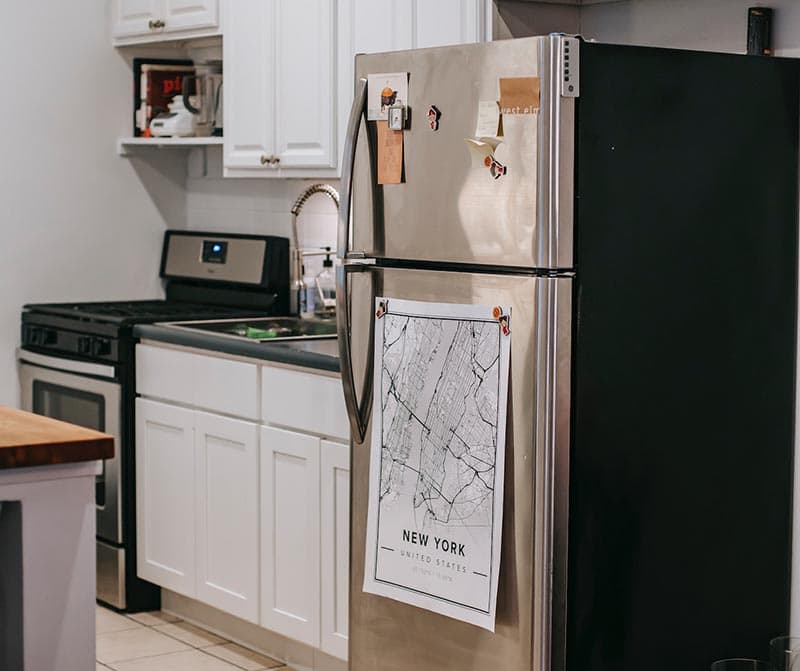
Top freezer refrigerators are the most well-known as they have been around the longest. With this type of fridge, the freezer sits over the refrigerator and has its separate door.
2. Bottom Freezer Refrigerators
Bottom freezer refrigerators are the opposite of top freezer fridges, with the sole difference being that the freezer is underneath the refrigerator.
3. Side-by-side Refrigerators
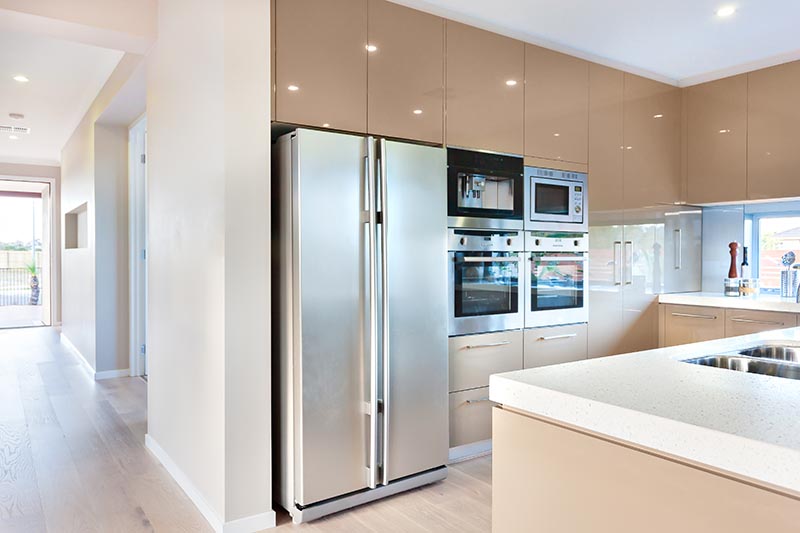
With a side-by-side refrigerator, the freezer and fridge are next to each other. The freezer is typically on the left, and the fridge is on the right.
4. French Door Refrigerators
French door fridges are like bottom freezer types, but the refrigerator has two doors that open French-style. The freezer is usually on the bottom with this style of refrigerator.
5. Quad Door Refrigerators
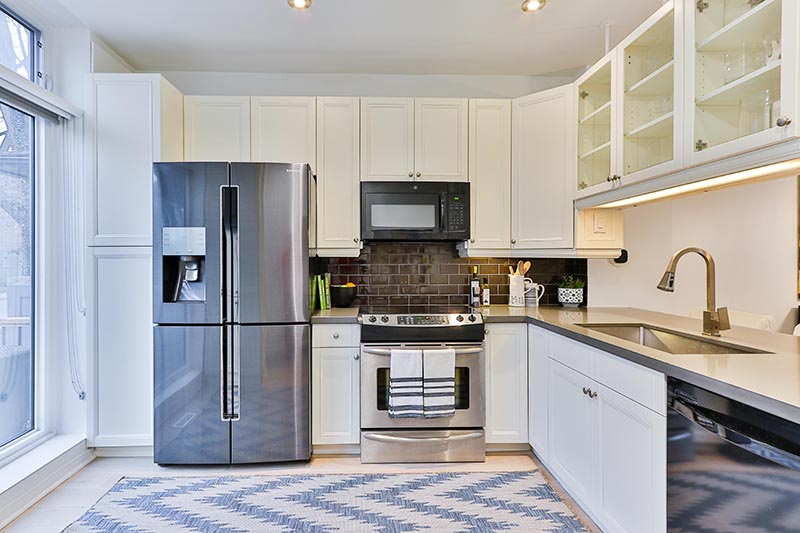
Quad-door fridges are also like bottom freezer fridges, except that both the refrigerator and the freezer have French-style doors that open from both sides.
Some refrigerators are made without freezers and are much smaller so that they fit under the counter. You also have mini refrigerators like the kind found in many college dorm rooms. Wine coolers are a type of refrigerator also, and all of these use the same basic refrigeration principles as the refrigerators named above.
Where Is It Used?
Refrigerators are used anywhere keeping food fresh and safe is essential, including practically every home in the United States and worldwide. Restaurants, grocery stores, cafes, bars, and other food service establishments also use refrigerators to keep their food and ingredients safe. Today, refrigerators are as ubiquitous as light bulbs or eating utensils.
Advantages of Refrigerators
There are undoubtedly many more advantages than disadvantages to refrigerators. They include the following:
- Refrigerators keep food from spoiling and help it last much longer.
- Fridges keep food fresh, crisp, and delicious.
- Refrigerators reduce the need for daily food shopping, saving you copious amounts of time and energy.
- Refrigerators keep your favorite beverages cold, like beer, iced tea, and soda.
- Refrigerators allow you to stock up on food items on sale and keep them long-term for later use in your mealtime preparations. This can also help you save money.
- You can always have something fresh and ready to eat when stored in a fridge.
- You can prepare meals ahead of time and keep them fresh and ready to eat.
- Using a fridge means you don’t have to use unhealthy preservatives or lots of salt.
Disadvantages of Refrigerators
Refrigerators have a few disadvantages, although most people gladly accept them because of their advantages. The disadvantages of refrigerators include the following:
- Refrigerators use a lot of energy. Statistically, refrigerators consume between 10 and 17% of your home’s energy.
- Some food odors are absorbed by other foods in the fridge.
- Refrigerators can be difficult to clean and keep clean.
- Refrigerating foods can destroy several vitamins, including Vitamins B and C.
- Refrigerators are one of the most expensive home appliances.
- Some foods, especially certain vegetables, lose their unique texture and taste after being refrigerated.
Frequently Asked Questions (FAQ)
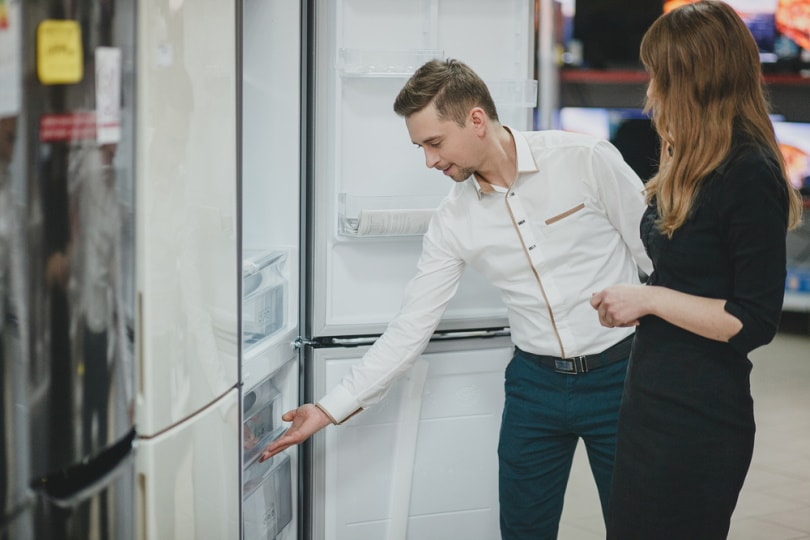
Which Refrigerator Is the Most Energy Efficient?
The top freezer refrigerator is the most energy efficient since the freezer is furthest away from the compressor, which makes a lot of heat. By keeping the freezer away from the compressor, less energy is needed to keep food frozen.
How Much Energy Can a Top Freezer Refrigerator Save?
Top freezer refrigerators save between 10 to 30% over other refrigerator models.
What Is the Ideal Temperature to Set for a Refrigerator?
Setting your fridge between 35 and 38 degrees Fahrenheit is best to prevent spoilage. Anything above 40 degrees Fahrenheit is not recommended.
Can I Change the Door Direction on my Refrigerator?
Most refrigerators are made so that, if needed, you can change them from a left-opening to a right-opening door and vice-versa. Refrigerators with French doors usually don’t have this option.
Final Thoughts
Refrigerators are amazing pieces of technology that use evaporation to keep your food cold, crips, and fresh and prevent it from “going bad.” Amazingly, refrigerators have been around for almost 200 years and have been used in American homes for over 100 years. Most people couldn’t imagine modern life without a refrigerator as they have become a ubiquitous part of our lives. Thank goodness for that, too, because everyday life would be far less modern and convenient without refrigerators.
- https://www.maytag.com/blog/kitchen/how-does-a-refrigerator-work.html
- https://www.designerappliances.com/blog/refrigerator-types/
- https://www.constellation.com/guides/appliances/energy-efficient-refrigerators.html
- https://www.realsimple.com/food-recipes/tools-products/appliances/how-does-refrigerator-work
Featured Image Credit: Image Credit: Pixel-Shot, Shutterstock
Contents
